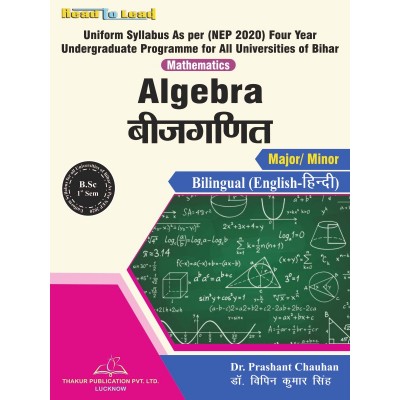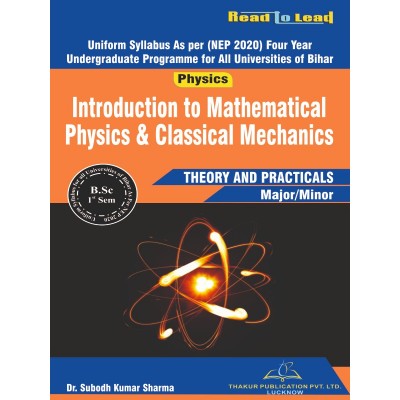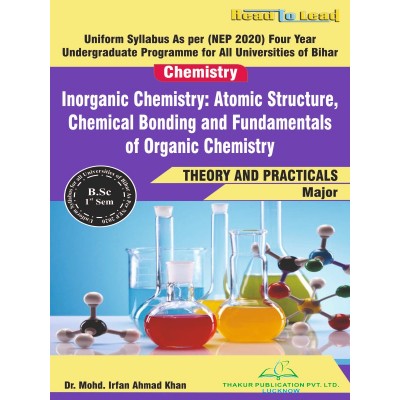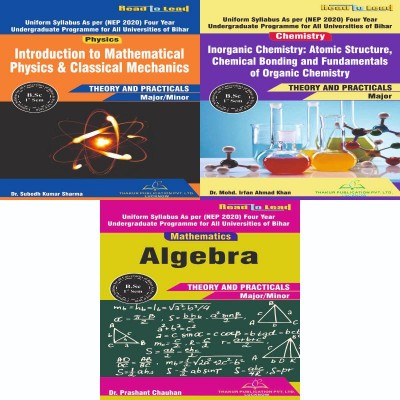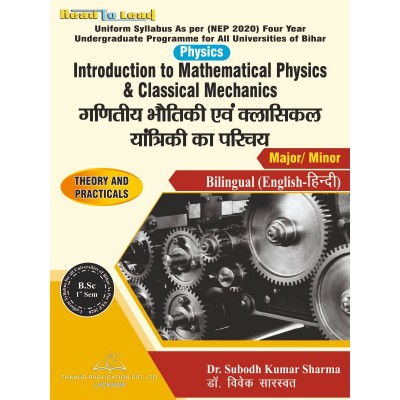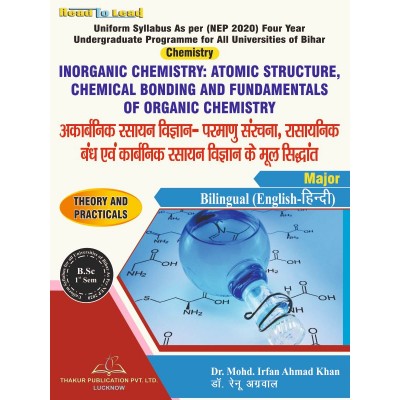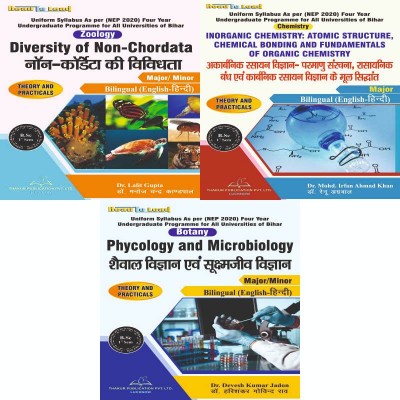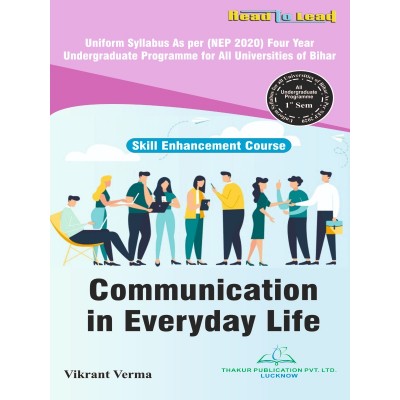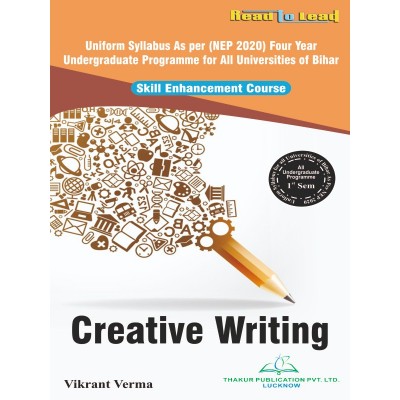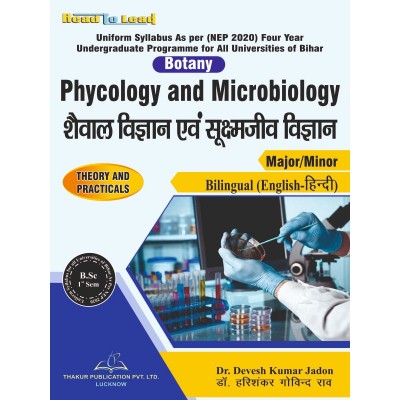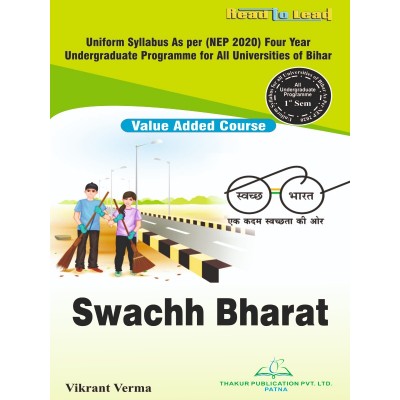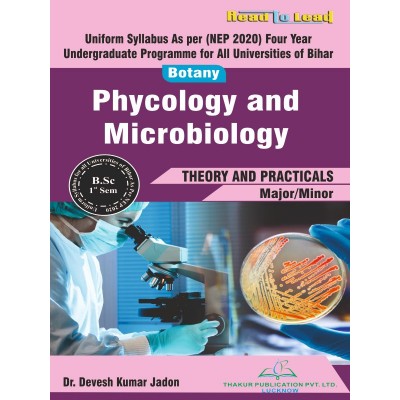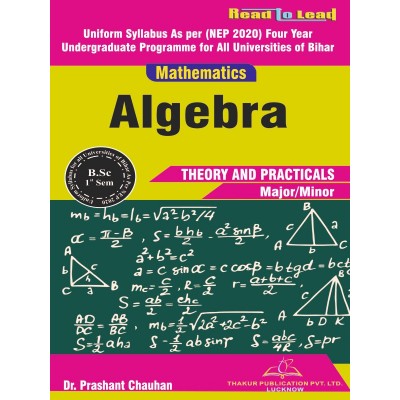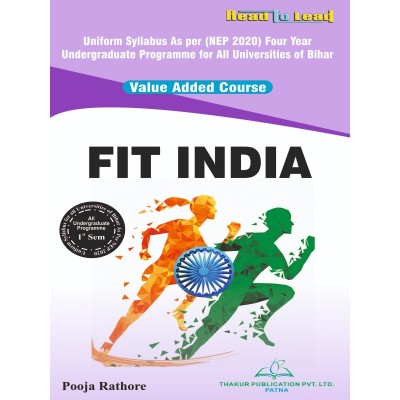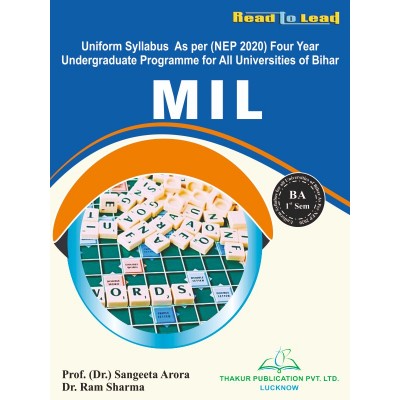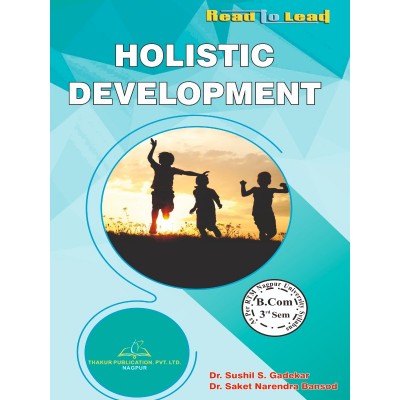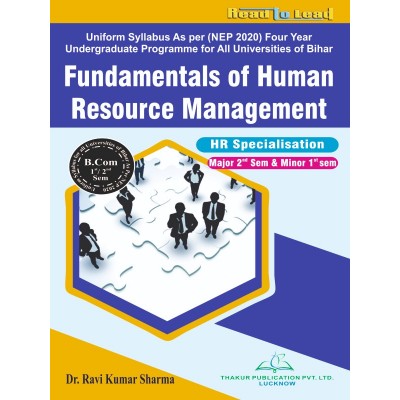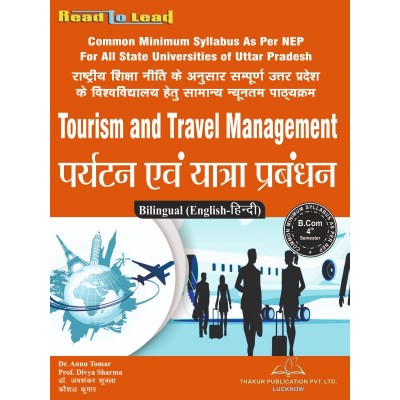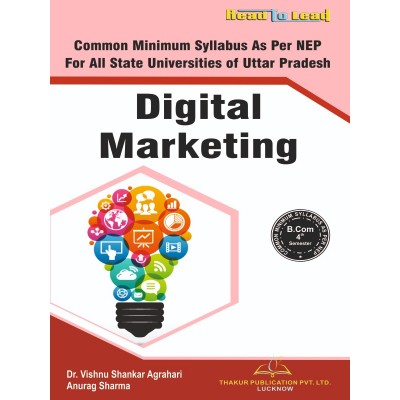Categories
- Pharmacy
-
Nursing
-
MBA
-
BBA
- U.P. State University
- Veer Bahadur Singh Purvanchal University, Jaunpur
- Chaudhary Charan Singh University, Meerut
- Dr. Bhimrao Ambedkar University, Agra
- Chhatrapati Shahu Ji Maharaj University, Kanpur
- Mahatma Jyotiba Phule Rohilkhand University, Bareilly
- Mahatma Gandhi Kashi Vidyapith, Varanasi
- Dr. Ram Manohar Lohia Avadh University, Ayodhya
- Deen Dayal Upadhyaya Gorakhpur University
- Prof. Rajendra Singh (Rajju Bhaiya) University, Prayagraj
-
BCA
- UP State Universities
- University of Pune
- I.K.Gujral Punjab Technical University (PTU)
- University of Rajasthan
- Rashtrasant Tukadoji Maharaj Nagpur University
- Uttar Pradesh NEP2020
- University of Rajasthan ,Jaipur (According to NEP-2020)
- BCCA (B. Com - Computer Science)
- Haryana
- West Bengal
- BBA (CA)
- PUNE BCA (Sci,Commerce)/B.Com (CA)
- Dr. A. P. J. Abdul Kalam Technical University, Lucknow ( AKTU )
- MCA
-
B Ed
- Lucknow University B.Ed Books
- Chaudhary Charan Singh University/Maa Shakambhari University, Saharanpur
- Dr Bhim Rao Ambedkar University, Agra
- Mahatma Gandhi Kashi Vidyapeeth, Varanasi
- Chhatrapati Shahu Ji Maharaj University
- Prof. Rajendra Singh (Rajju Bhaiya) University, Prayagraj (PRSU)
- Mahatma Jyotiba Phule Rohilkhand University(Mjpru), Bareilly
- Dr. Ram Manohar Lohia Avadh University, Ayodhya
- Bundelkhand University, Jhansi
- B.A,B.ed
- B.Sc, B.ed
- Deen Dayal Upadhyaya Gorakhpur University
- Veer Bahadur Purvanchal University (VBPU)
- Maharaja Suhel Dev State University ,Azamgarh (MSDSU)
- Raja Mahendra Pratap Singh State University, Aligarh (RMPSSU)
- Barkatullah Vishwavidyalaya (Bhopal)
- Jiwaji University (Gwalior)
- Vikram University (Ujjain)
- Dr. Harisingh Gour University (Sagar)
- Devi Ahilya Vishwavidyalaya (Indore)
- Rani Durgavati Vishwavidyalaya (Jabalpur)
- Awadhesh Pratap Singh University (Rewa)
- Maharaja Chhatrasal Bundelkhand University (Chhatarpur)
- D. EL. ED
- TET
-
B Com
-
B Sc
- B.Sc. U.P. State Universities Common Syllabus NEP
- Veer Bahadur Singh Purvanchal University, Jaunpur
- University of Lucknow
- Chaudhary Charan Singh University, Meerut
- Madhya Pradesh
- Chhatrapati Shahu Ji Maharaj University, Kanpur
- Dr. Bhimrao Ambedkar University, Agra
- Mahatma Gandhi Kashi Vidyapith, Varanasi
- DEEN DAYAL UPADHYAYA GORAKHPUR UNIVERSITY
- Prof. Rajendra Singh (Rajju Bhaiya) University, Prayagraj
- Dr. Ram Manohar Lohia Avadh University, Ayodhya
- Mahatma Jyotiba Phule Rohilkhand University, Bareilly
- Uttarakhand State Universities
- B.Sc. Bihar Universities Common Syllabus NEP
- University of Rajasthan (Jaipur)
- Haryana
-
Bachelor of Arts [B.A.]
- B.A. Of U.P. State Universities Common Syllabus NEP
- Veer Bahadur Singh Purvanchal University, Jaunpur
- University of Lucknow
- Chaudhary Charan Singh University, Meerut
- Chhatrapati Shahu Ji Maharaj University, Kanpur
- Dr. Bhimrao Ambedkar University, Agra
- Mahatma Gandhi Kashi Vidyapith, Varanasi
- Deen Dayal Upadhyaya Gorakhpur University
- Prof. Rajendra Singh (Rajju Bhaiya) University, Prayagraj
- Dr. Ram Manohar Lohia Avadh University, Ayodhya
- Mahatma Jyotiba Phule Rohilkhand University, Bareilly
- Madhya Pradesh
- Uttarakhand
- Bihar
- University of Rajasthan (Jaipur Syllabus as Per NEP2020)
- Haryana NEP-2020
- B Tech
- LLB
- SWA Education
Diversity of Non-Chordata (Zoology ) Major/Minor Book Bihar B.SC First Sem
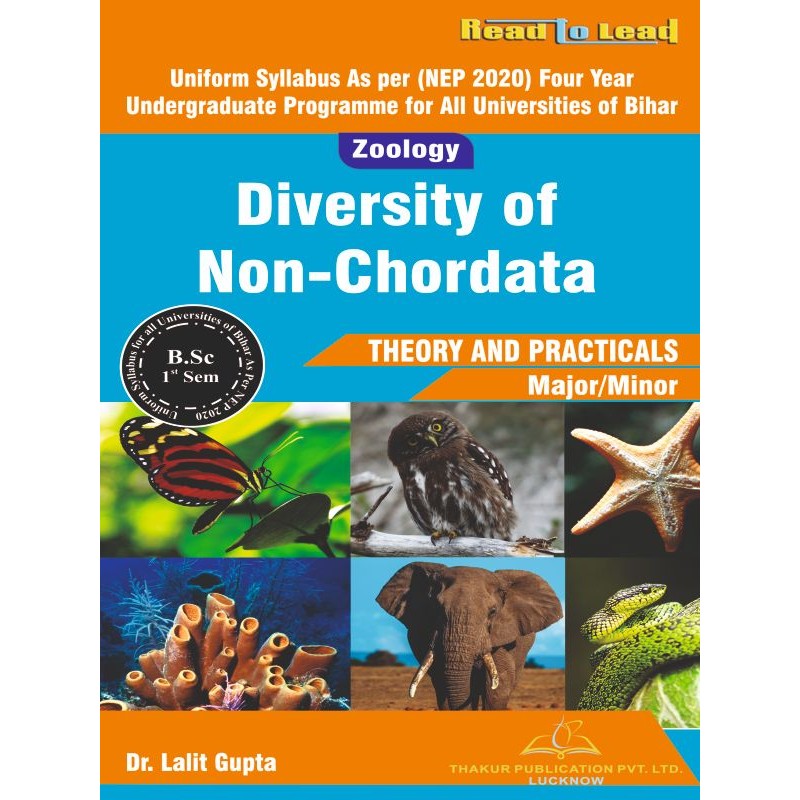
Click to Buy E-Books:
Buy Latest (Zoology) Diversity of Non-Chordata Major/Minor Book in English language for B.Sc 1st Semester Bihar State By Thakur publication.
AUTHOR : Dr. Lalit Gupta
ISBN : 9789357553605
Tax excluded
Click to Buy E-Books:
Buy Latest (Zoology) Diversity of Non-Chordata Major/Minor Book in English language for B.Sc 1st Semester Bihar State By Thakur publication.
AUTHOR : Dr. Lalit Gupta
ISBN : 9789357553605
Syllabus
|
MJC-1: Diversity of Non-Chordata (Theory: 4 credits) 40hrs |
||
|
Unit |
Topics To be Covered |
No. of Lectures |
|
1 |
1. Introduction to Non-Chordates: General characteristics and classification (up to order) of the following Phyla: Protozoa, Porifera, Cnidaria, Ctenophora, Platyhelminthes and Nemathelminths, Annelida, Arthropoda, Mollusca, Echinodermata. |
8 |
|
2 |
2.1 Protozoa: Structure and Life cycle of Paramecium, Plasmodium, Entamoeba histolytica, Trypanosoma, L. donovani |
10 |
|
2.2. Porifera: Spicules and Canal system in sponges; affinities of the Phylum |
||
|
3 |
3.1. Cnidaria: Structure and Life Cycle: Obelia, Aurelia |
10 |
|
3.2. Ctenophora: General organisation of Hormiphora; affinities of the phylum. |
||
|
3.3. Platyhelminthes and Nemathelminthes: Structure and Life cycle of Fasciola hepatica, Taenia solium, Ascaris lumbricoides. |
||
|
4 |
4.1. Annelida: Earthworm, Leech: Structure, locomotion, alimentary canal Reproduction. |
12 |
|
4.2. Arthropoda: Peripatus, Adaptive variations in insect mouth parts. |
||
|
4.3. Mollusca: Structure and Life Cycle: Unio Pila, Torsion and Detorsion in Gastropoda |
||
|
4.4. Echinodermata: Structure: Star fish; Larval forms in Echinoderms; Water Vascular System in Echinoderms |
||
|
|
Total |
40 |
Practical
|
MJC-1: Diversity of Non-Chordata (Practical: 2 credits) 20hrs |
|
|
Practical: |
|
|
1) |
Study of whole mount of Euglena, Amoeba, Paramecium, Monocystis; Binary fission and Conjugation in Paramecium. |
|
2)
|
Study of Sycon; T.S. of Sycon, L.S. of Sycon; Gemmule, Hyalonema. |
|
3)
|
Permanent stained preparation of spicules of sponges. |
|
4)
|
Study of Obelia, Aurelia, Metridium, Physalia. |
|
5)
|
Specimen/slide of any one Ctenophore. |
|
6)
|
Study of adult Fasciola hepatica, Taenia solium and Ascaris (male and female). |
|
7)
|
Study of Aphrodite, Septal nephridia and Ovary of Earthworm; Jaws of leech; Trochophore larva. |
|
8)
|
Study of T.S. through pharynx, gizzard, and typhlosolar region of earthworm |
|
9)
|
Study of Limulus, Scolopendra, Grasshopper, Phyllium, Praying mantis, and Palaemon, Sacculina, Cancer, Eupagurus, Apis, Musca, Salivary gland of Cockroach, Mouth parts of Mosquito. |
|
10)
|
Study of Chiton, Dentalium, Octopus, Glochidim larva. |
|
11)
|
Study of Asteria, Echinus, Antedon. |
Syllabus
|
MIC-1: Diversity of Non-Chordata (Theory: 2credits) 20 hrs |
||
|
Unit |
Topics to be covered |
No. of Lectures |
|
1 |
I. Introduction to Non-chordates General characteristics and classification (up to order) of the following Phyla: Protozoa, Porifera, Cnidaria, Ctenophora, Platyhelminthes and Nemathelminths, Annelida, Arthropoda, Mollusca, Echinodermata. |
5 |
|
2 |
2. Structure and life history of:- (i) Protozoa - Paramecium (ii) Porifera – Sycon |
4 |
|
3 |
3. Structure and life history of:- (iii) Cnidaria - Obelia (iv) Platyhelminthes - Fasciola (v) Aschelminthes – Ascaris |
5 |
|
4 |
4. Study of coelomates:- (vi) Annelida - Pheretima (vii) Arthropoda - Palaemon (viii) Mollusca - Pila (ix) Echinodermata - Asterias (x) Hemichordata - Balanoglossus |
6 |
|
|
Total |
20 |
Practical
|
MIC-1: Diversity of Non-Chordata (Practical) 10 hrs (1 credit) |
|
Practicals: 1. Study of whole mount of Euglena, Paramecium, Leishmania 2. Study of Sycon, Spongilla, T.S. of Sycon, L.S. of Sycon. 3. Study of Obelia, Aurelia, Gorgonia 4. Study of adult Fasciola hepatica, Taenia solium and their life stages 5. Study of Pheretima, Hirudinaria 6. Study of T.S. through pharynx, gizzard, and typhlosolar intestine of earthworm. 7. Study of Limulus, Palaemon, Apis. 8. Mouth parts of Mosquito and Cockroach. 9. Study of Pila, Unio. 10. Study of Asterias. |
16 other products in the same category:
Your review appreciation cannot be sent
Report comment
Report sent
Your report cannot be sent
Write your review
Review sent
Your review cannot be sent










